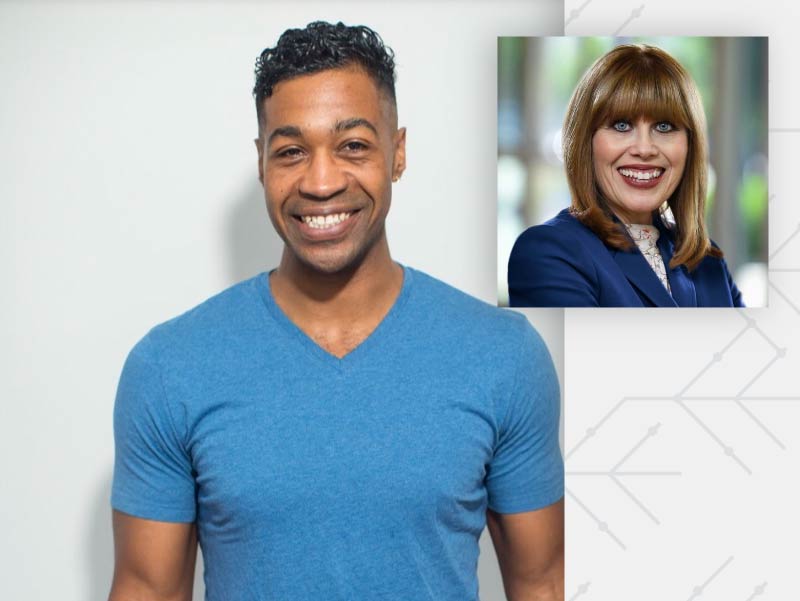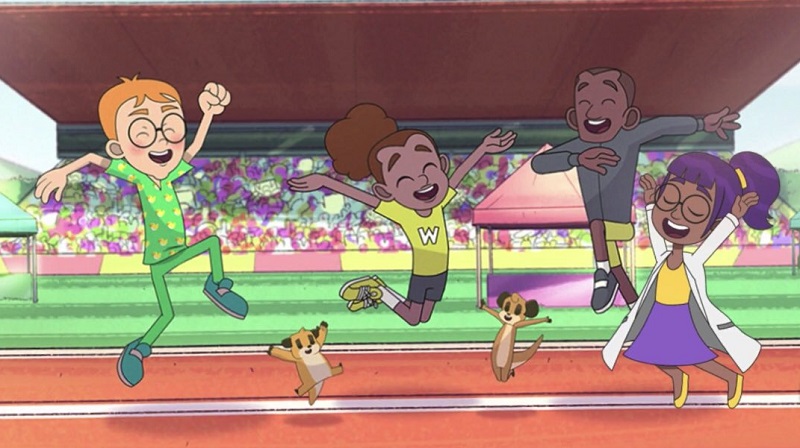Sick kids deserve answers, explanations. Who better to deliver them than cartoon characters?
By Nancy Brown, American Heart Association CEO

At 10:17 a.m. on the first day of his first job out of law school, Sunny Williams looked at the stack of papers on his desk and thought, "I've made a terrible mistake."
His mind raced ahead 20 years. While he could envision fulfilling his plan of opening a practice specializing in entertainment law, he was no longer sure he wanted to.
"What kind of impact can I make in the world by doing this?" he thought. "If my impact is just making a lot of money, that's not enough."
So Sunny began seeking a new goal. Six months later, he found it: He would create animated videos to help kids better understand scary stuff like doctor visits, hospitals and medical procedures.
Yep, that was his plan … even though he didn't know how to draw. Or make videos. And had zero training in medicine, psychology, social work, education or other necessary disciplines.
Then again, he did have one thing going for him: experience being that scared kid.
Five years later, Sunny is the CEO of Tiny Docs, a company that's begun putting out the product he wishes would've been available to him. Tiny Docs has posted about a dozen videos on YouTube, with more on the way. The company has gotten buy-in from every sector that matters, with perhaps the best validation coming from a former "Sesame Street" executive. She liked it so much she joined the board of directors.
I learned about Sunny and Tiny Docs last year, when they were top qualifiers in my organization's EmPOWERED to Serve Urban Health Accelerator. It's my pleasure to share their story and draw attention to this clever, creative way to make getting healthy a little less painful.
***
Everything stems from this fact: Sunny was a klutzy kid.
Growing up in the Philadelphia area, he fell out of trees and got hurt on playgrounds. Bones broke and gashes had to be stitched shut.
Then came the time in grade school when he was playing basketball and caught another kid's finger in his right eye. Sunny's retina was scratched and a tear duct was clawed out.
In the ER, he was understandably overwhelmed and scared. But it's important to know one more thing about young Sunny: He was a shy, high-strung mama's boy. So his fears zoomed to losing his vision and maybe even the eye itself.
He needed surgery, but not until the next day. That meant more time to worry, comforted only by a manila envelope filled with pamphlets.
"They were no aid to allay my anxiety," he said. "Science shows when we don't know what's going to happen next, we tend to awfulize it. That's what happened. In my active imagination, I created this narrative in my head of what would go wrong."
His eye healed, for the most part. The new duct leaks sometimes, with tears dripping at an awkward angle.
Yet it was the emotional scars that would change his life.
***

In the Hollywood version of Sunny's story, the kid overwhelmed by doctor-speak becomes a doctor with a gift for relating to children.
But med school never interested him. People always told Sunny he'd make a great lawyer, so he followed their advice.
When the doubts set in, and he dreaded each workday, he kept going to his Chicago office because he had bills to pay. Meanwhile, his friends were getting married and starting families.
When several friends mentioned the stress of visiting the pediatrician, it caught Sunny's attention.
When they mentioned their kids receiving pamphlets, his epiphany arrived.
"In this age with the wealth of resources and technology, we can do better," he thought. "What if we create a cast of characters that kids adore and trust to help allay their anxieties and educate them at the same time?"
The cast of characters introduced themselves to Sunny one night in a dream. He awoke and scribbled notes about a purple-haired girl named Dr. Patches, a blonde guy wearing green scrubs dotted with rubber duckies named Nurse Scrubs and a trio of meerkats named Tim, Tom and Tam.
***
Doctor friends said he was on to something. Others saw potential, too. Not everyone, of course.
"Much to the disappointment of my parents, I had to go with my passion," Sunny said, laughing.
He found an illustrator to draw the characters, writers to create storyboards and digital animators to put it all together.
A Kickstarter campaign led to a fellowship with Camelback Ventures, an accelerator for minority entrepreneurs with early-stage ideas that can help people. That led to another fellowship with another social impact accelerator, the Unreasonable Institute (now called Uncharted).
Through Unreasonable, Sunny met Charlotte Cole, former senior vice president of global education at Sesame Workshop.
"At that point, we only had a couple of animations under our belt, but we were proud because of the sweat equity that went into them," he said. "Hearing her say we were headed in the right direction was incredibly exciting."
***
The first Tiny Docs video was "Shiver Me Tonsils."
A boy named Kevin is pretending to be a pirate when a sore throat stops him. Mom takes him to Dr. Patches, Nurse Scrubs and the meerkats. Patches explains that the problem is his tonsils and they need to come out. Scrubs says that after the procedure, Kevin will get ice cream – if it's OK with Mom. A cute final scene pulls it all together. No spoilers here; watch the video to see for yourself.
Like the pilot episode of a TV series, this cartoon (or, in the Tiny Docs vernacular, "caretoon") introduces each character and begins its mission of making things less intimidating. It covers a doctor's visit and surgery, and spells out the words "tonsillectomy" and "anesthesia."
"Our children's media advisor said not to shy from using big words, but to explain them in a way that kids can absorb and comprehend," Sunny said. "What we found is that they may not get it the first time, but they like it, so they'll watch it multiple times."
Sunny adds that it's quite intentional that the doctor is female and the nurse is male (a girl and a boy, actually, as both are drawn as school-aged children). The next goal is becoming more diverse. That will happen through new characters in upcoming episodes.
***
The Tiny Docs homepage includes testimonials from a parent, a pediatrician and a third-grader.
Sunny's favorite feedback involves a girl named Avery who was worried about undergoing anesthesia. Seeing Dr. Patches explain it to Kevin calmed her.
"Her mom also told us that Avery now wants to be a doctor," Sunny said. "Those are the types of stories that carry me and the team through any tough times we might experience."
Another important demographic that likes the Tiny Docs product: paying customers. These include doctors' offices, hospitals and health care systems.
"Some episodes will be free, but the idea is to create a Netflix for health care," Sunny said. "These institutions pay a subscription fee to have unlimited use of our library however they wish."
***
As CEO, Sunny has to focus on his company's bottom line.
His guiding principle, though, is that producing great videos will ensure plenty of profit.
Thus, his benchmark for success is the company's new tagline: chasing a billion smiles in 100 languages.
"We're developing a counter that will be on our website soon. 'Ready, Set, Breathe!' was accepted into the Children's Film Festival and we completed the Spanish version of 'Shiver Me Tonsils.' I could not be more excited about the future," he said.
"We are well on our way."
A version of this column also appeared on Thrive Global.
If you have questions or comments about this story, please email [email protected].





